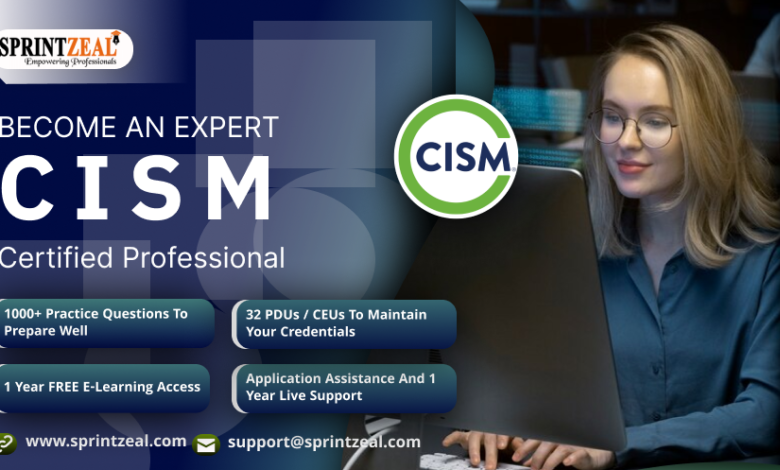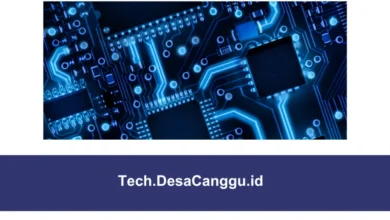Mastering the CISM Certification: A Comprehensive Guide to Exam Preparation

Introduction: In the ever-evolving landscape of information security, professionals seek validation of their expertise through certifications that demonstrate their competency and proficiency. Among the most respected and sought-after certifications is the Certified Information Security Manager (CISM). Offered by ISACA (Information Systems Audit and Control Association), the CISM certification validates an individual’s ability to manage, design, oversee, and assess an enterprise’s information security.
Securing the CISM certification requires dedication, strategic planning, and a thorough understanding of the domains covered in the exam. In this article, we’ll delve into the intricacies of the CISM certification, explore its significance, and provide actionable tips and strategies to effectively prepare for and ace the CISM exam.
Understanding the CISM Certification: The CISM certification is designed for information security managers, aspiring managers, or individuals in key security positions seeking to enhance their knowledge and skills. It is globally recognized and demonstrates expertise in information security governance, risk management, compliance, and incident response.
To attain the CISM certification, candidates must pass the CISM exam, which comprises four domains:
- Information Security Governance
- Information Risk Management
- Information Security Program Development and Management
- Information Security Incident Management
Each domain encompasses specific knowledge areas and tasks essential for effective information security management within an organization. Mastery of these domains is crucial not only for passing the exam but also for excelling in real-world security roles.
CISM Exam Preparation Tips: Preparing for the CISM exam requires a structured approach, dedication, and the utilization of various resources. Here are comprehensive tips to streamline your preparation and increase your chances of success:
- Understand the Exam Blueprint: Familiarize yourself with the CISM exam blueprint provided by ISACA. This document outlines the domains, their weightage, and the knowledge areas covered. Understanding the exam’s structure enables you to allocate your study time effectively and focus on areas where you need improvement.
- Establish a Study Plan: Develop a study plan tailored to your schedule and learning preferences. Break down the study material into manageable sections and allocate specific time slots for each domain. Consistency is key, so strive to study regularly and avoid last-minute cramming.
- Utilize Official Resources: ISACA offers official resources such as the CISM Review Manual, CISM Review Questions, Answers & Explanations Manual, and CISM Online Review Course. These materials provide comprehensive coverage of exam topics and are essential components of your study arsenal.
- Supplement with Additional Resources: Enhance your understanding of complex topics by supplementing official resources with additional study materials such as textbooks, online courses, and practice exams. Explore reputable platforms like Cybrary, Udemy, and Pluralsight for supplementary learning resources.
- Join Study Groups or Forums: Engage with fellow CISM aspirants by joining study groups or online forums dedicated to CISM exam preparation. Participating in discussions, sharing insights, and solving practice questions collectively can enhance your learning experience and provide valuable perspectives.
- Practice with Sample Questions: Regularly practice with sample questions and mock exams to gauge your understanding and identify areas of weakness. ISACA offers sample questions through its official resources, and numerous third-party providers offer practice exams that simulate the real exam environment.
- Focus on Weak Areas: Identify your weak areas through practice exams and allocate additional study time to reinforce your understanding. Consult official resources, review relevant study materials, and seek clarification from mentors or peers to address knowledge gaps effectively.
- Hands-On Experience: Supplement theoretical knowledge with hands-on experience whenever possible. Practical experience in implementing security measures, conducting risk assessments, and managing security incidents enriches your understanding and reinforces key concepts.
- Stay Updated: Information security is a dynamic field, with new threats, technologies, and regulations emerging regularly. Stay updated with the latest developments, industry trends, and best practices by following reputable blogs, attending webinars, and participating in relevant professional communities.
- Take Care of Yourself: Prioritize self-care during your exam preparation journey. Maintain a healthy lifestyle, get adequate sleep, and take regular breaks to prevent burnout. Balancing your physical and mental well-being ensures optimal cognitive function and enhances your ability to retain information.
Conclusion: Achieving the CISM certification is a significant milestone in the career of an information security professional. By following a structured study plan, leveraging official and supplementary resources, and adopting effective exam preparation strategies, you can enhance your chances of success and demonstrate your expertise in information security governance, risk management, and incident response. Remember to stay focused, persevere through challenges, and approach the exam with confidence. With dedication and determination, you can master the CISM certification and advance your career in the dynamic field of information security.



